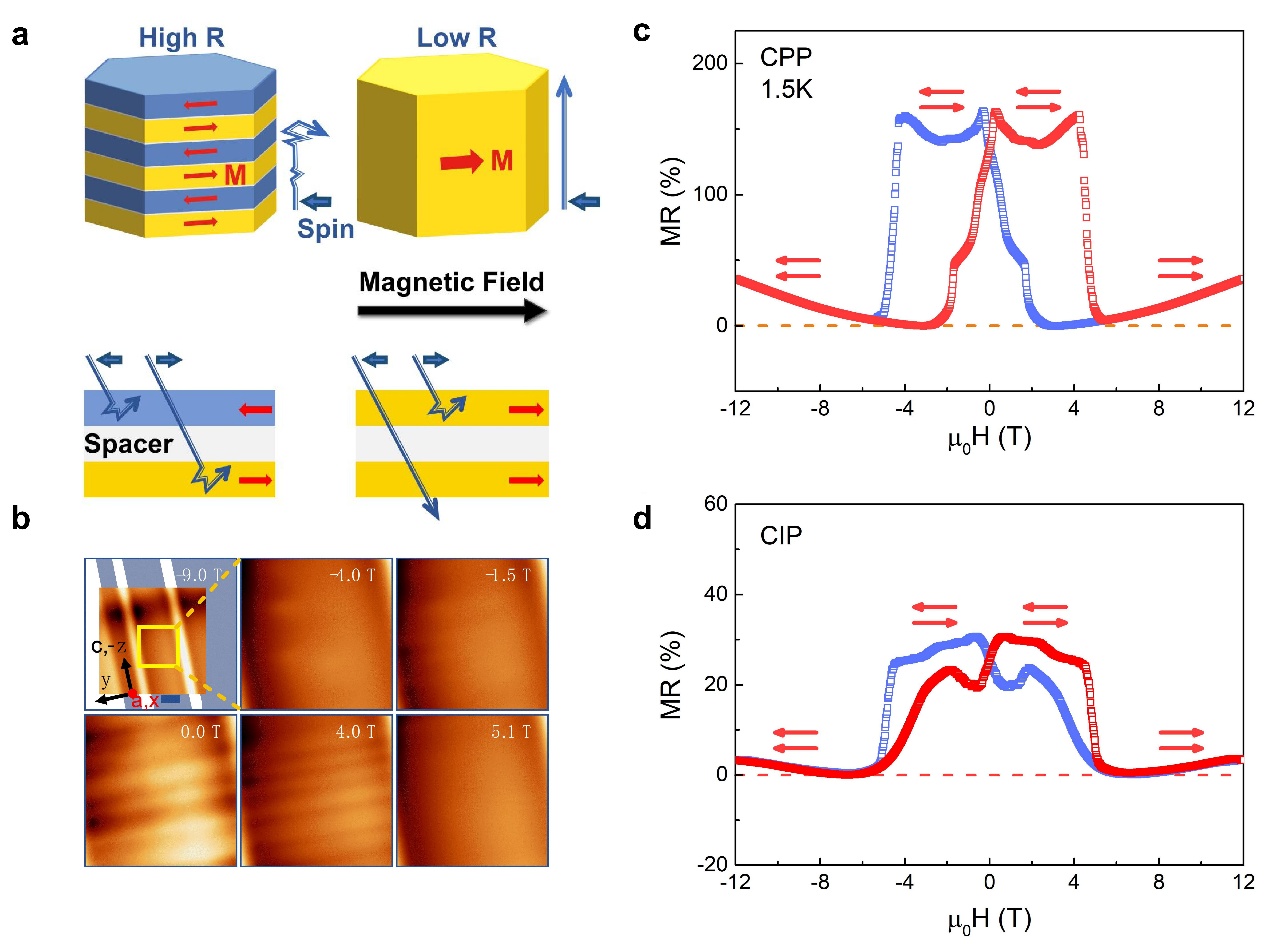
Recently, a group of researchers led by Prof. QU Zhe from the Hefei Institutes of Physical Science of the Chinese Academy of Sciences, together with Prof. CHANG Tay-Rong from National Cheng Kung University has discovered a novel way to achieve spin-valve effects using kagome quantum magnets.
"This approach uses a prototype device made from the kagome magnet TmMn₆Sn₆," explained Associate Prof. XU Xitong, "This breakthrough eliminates the need for the complex fabrication techniques traditionally required by spin-valve structures."
The finding was published in Nature Communications.
Spin-valve devices, widely used in magnetic sensing, typically consist of a trilayer structure of ferromagnetic layer/nonmagnetic spacer/ferromagnetic layer. This structure modulates spin scattering strength by controlling the relative magnetic orientation of the ferromagnetic layers, enabling a spin-dependent transport effect called the giant magnetoresistance. However, traditional sandwich-structured spin-valve devices require complex fabrication processes such as atomic-level flat epitaxial growth, sputtering deposition, or precise mechanical stacking of van der Waals heterostructures, posing challenges in stability and scalability.
To address these limitations, the research team proposed a novel mechanism that takes advantage of the unique interlayer interactions in kagome helimagnets. By applying an external magnetic field, they induced a special parallel multidomain state in the kagome magnet TmMn₆Sn₆, effectively replicating the behavior of traditional spin-valve structures—without the need for complex material stacking.
Transport measurements on their prototype device revealed a giant magnetoresistance effect exceeding 160%. Additionally, magnetic force microscopy imaging at the High Magnetic Field Laboratory confirmed that this effect originates from domain-wall scattering.
Further theoretical analysis showed that the spin-valve effect in kagome helimagnets offers high tunability, opening exciting possibilities for future spintronic applications.
This study offers new avenues for developing low-power-consumption spintronic devices based on quantum magnets, according to the team.

(a) A sketch of the spin-valve effect in bulk kagome helimagnet. (b) MFM images of TmMn6Sn6 under magnetic field. (c) The asymmetric magnetoresistance for electric current along the helical axis of TmMn6Sn6, with GMR ratio over 160%. (d) The asymmetric magnetoresistance for current perpendicular to the helical axis. (Image by XU Xitong)